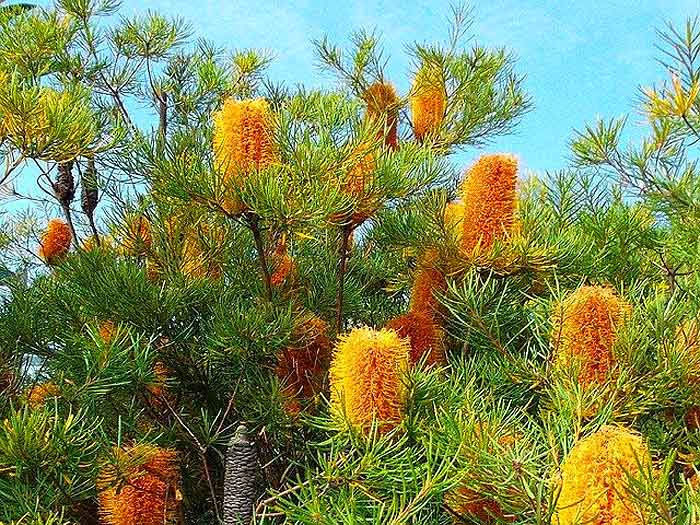
Banksia is among the most famous floral symbols in Australia. It’s named after an English explorer and naturalist – Sir Joseph Banks, who collected and described these plants during his expedition to Australia.

Banksia is a genus of about 100 species[1] in the Proteaceae plant family and is native to Australia and South Africa. These popular garden plants and Australian wildflowers are easily recognized by their characteristic fruity “cones” and buds as well as flower spikes.

Banksia flowers come in purple, green, red, orange, cream, yellow, or brown. Depending on the species, Banksias reach heights between 25 cm and 30 m.

The flowers usually have a honey scent and are rich in nectar. Banksias make excellent cut flowers due to their long lifespan and the shape of their flowers.

Banksia saxicola, Grampians Banksia, or Rock Banksia, is a species of shrubs or trees in the Banksia plant genus. It is endemic to Australia and is found in two different populations in Victoria, one on Wilsons Promontory and the other in the Grampians.
There are more than 75 types of Banksia[2]. Close to the coast, Banksia saxicola grows up to 13 meters (43 feet) tall as a tree, while in alpine zones, it’s a shrub that can reach a height of up to 5 meters (16 feet). The dark green leathery leaves are roughly ovate.
They are 4 to 10 centimeters (2 to 4 inches) long and 1 to 3.5 centimeters (0.39 to 1.4 inches) wide. The flowers bloom from January to March. The grayish-yellow cylindrical inflorescences arise from branches of 2 to 6 years.











